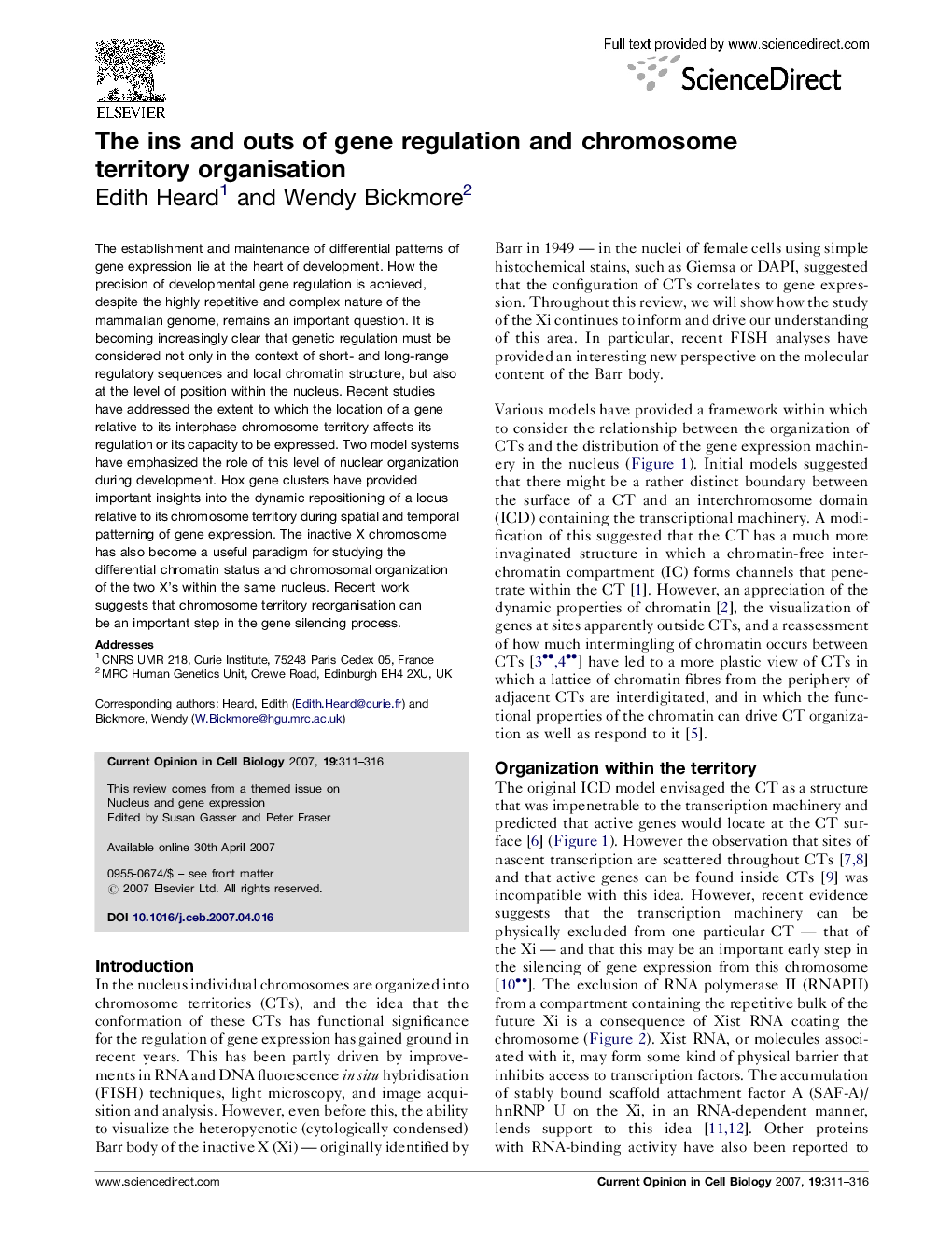| Article ID | Journal | Published Year | Pages | File Type |
|---|---|---|---|---|
| 2170294 | Current Opinion in Cell Biology | 2007 | 6 Pages |
The establishment and maintenance of differential patterns of gene expression lie at the heart of development. How the precision of developmental gene regulation is achieved, despite the highly repetitive and complex nature of the mammalian genome, remains an important question. It is becoming increasingly clear that genetic regulation must be considered not only in the context of short- and long-range regulatory sequences and local chromatin structure, but also at the level of position within the nucleus. Recent studies have addressed the extent to which the location of a gene relative to its interphase chromosome territory affects its regulation or its capacity to be expressed. Two model systems have emphasized the role of this level of nuclear organization during development. Hox gene clusters have provided important insights into the dynamic repositioning of a locus relative to its chromosome territory during spatial and temporal patterning of gene expression. The inactive X chromosome has also become a useful paradigm for studying the differential chromatin status and chromosomal organization of the two X's within the same nucleus. Recent work suggests that chromosome territory reorganisation can be an important step in the gene silencing process.
